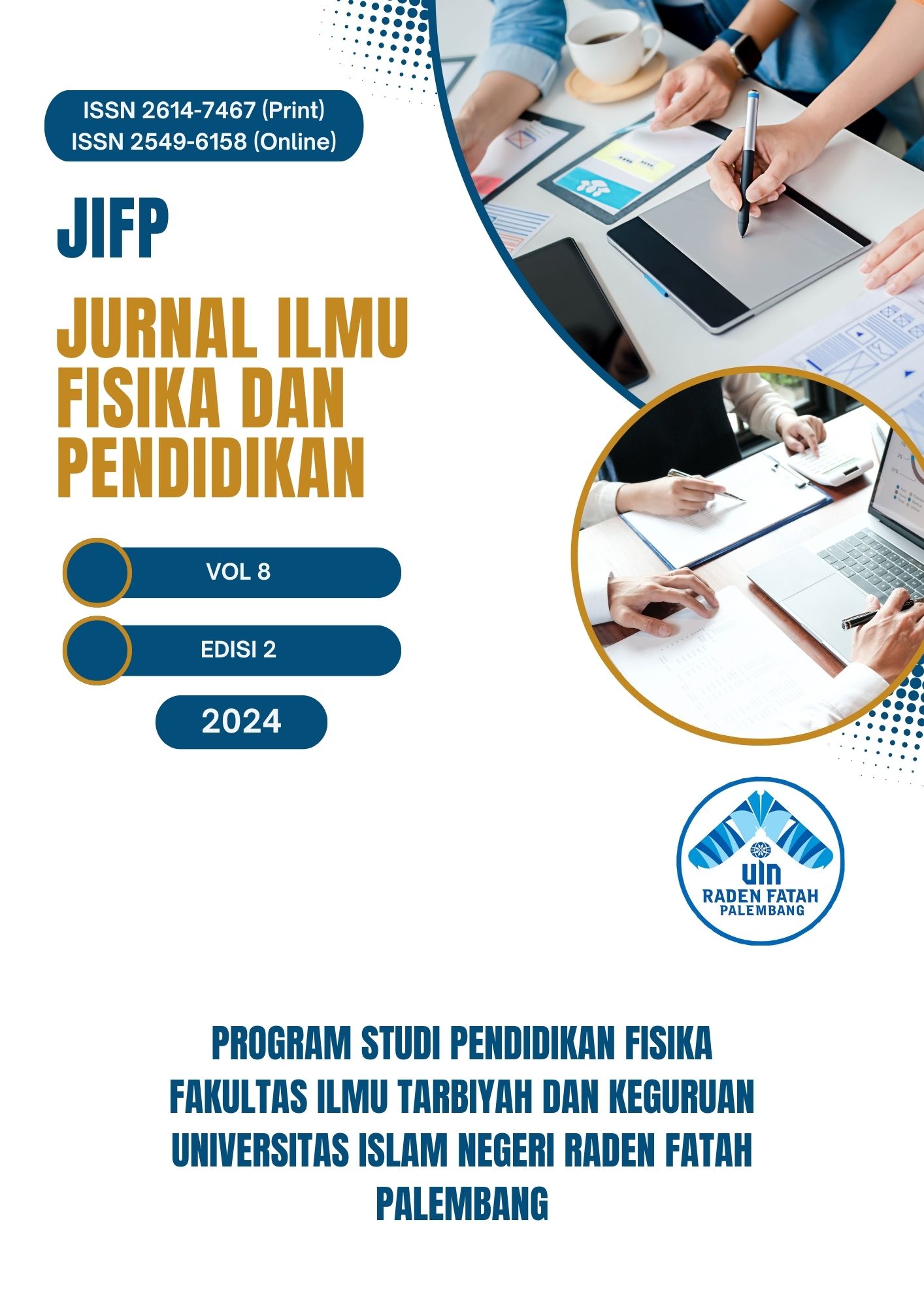Analysis of 2D Vector Application Using PhET Virtual Laboratory
Main Article Content
Abstract
Physics explores natural phenomena ranging from everyday experiences to abstract concepts, with vectors being a fundamental component essential for analyzing motion and other physical occurrences. Vectors, defined by their magnitude and direction, are key to describing various phenomena such as force, speed, and acceleration. Utilizing virtual laboratories like PhET offers an excellent opportunity to enhance understanding of vector concepts through interactive simulations. This research focuses on the application of 2D vectors using the PhET virtual laboratory. The research methods include quantitative experiments, where participants engage with vector simulations in a virtual environment. The results indicate that variations in the angle and magnitude of vectors significantly impact the resultant vector's value. These interactive simulations allow for real-time visualization and manipulation of parameters, leading to a deeper comprehension of the subject. Despite some limitations, including the necessity for technological access and the potential for oversimplifying physical phenomena, the benefits of these simulations make them invaluable tools for teaching and research in vector studies. Overall, PhET simulations accelerate the learning process, providing students with a richer and more practical experience to better grasp vector concepts.
Downloads
Article Details
How to Cite
References
Ab, G. E. P. H. L., & Aljanazrah, A. (2020). T HE E FFECTIVENESS OF U SING V IRTUAL E XPERIMENTS ON S TUDENTS ’ L EARNING IN THE. 19, 976–995.
Asmaidah, S. (2023). PENGARUH PENGUASAAN VEKTOR TERHADAP HASIL BELAJAR FISIKA MATERI POKOK GAYA DI KELAS XI SMA NEGERI 1 SIPIROK. JURNAL PhysEdu (PHYSICS EDUCATION), 5(3), 8–14.
Dewa, E., Ursula, M., Mukin, J., & Pandango, O. (2020). Pengaruh Pembelajaran Daring Berbantuan Laboratorium Virtual Terhadap Minat dan Hasil Belajar Kognitif Fisika. 3(2), 6–7.
Muzana, S. R., Lubis, S. P. W., & Wirda, W. (2021). Penggunaan simulasi phet terhadap efektifitas belajar IPA. Jurnal Dedikasi Pendidikan, 5(1), 227–236.
Ruslan, D., & Kembuan, E. (2021). Efektivitas Penggunaan Simulasi dengan Multisim Berbantuan Virtual Laboratory untuk Meningkatkan Kemampuan Berpikir Kritis Mahasiswa Jurusan Pendidikan Teknik Elektro. 9(1), 39–47. https://doi.org/10.31629/kiprah.v9i1.3235
Santoso, I., Saputra, I. M., & Setiaji, B. (2023). Fisika Dalam Game : Konsep Resultan Vektor Gaya Pada Karakter Fanny Di Mobile Legends. 6(1), 40–48.
Septiani, I., Lesmono, A. D., & Harimukti, A. (2020). Analisis Minat Belajar Siswa Menggunakan Model Problem Based Learning Dengan Pendekatan Stem Pada Materi Vektor Di Kelas X Mipa 3 Sman 2 Jember. Jurnal Pembelajaran Fisika, 9(2), 64. https://doi.org/10.19184/jpf.v9i1.17969
Siung, M., Nasar, A., & Dala Ngapa, Y. S. (2023). Pengembangan Modul Ajar Dengan Pendekatan Kontekstual Untuk Meningkatkan Hasil Belajar Fisika Materi Analisis Gerak Dengan Vektor. OPTIKA: Jurnal Pendidikan Fisika, 7(2), 226–238. https://doi.org/10.37478/optika.v7i2.2023
Supardi, S., Poerwono, P., Kaban, H., & Cahyati, N. (2021). Identifikasi Pemahaman Mahasiswa Terhadap Besaran Vektor Dan Besaran Skalar Pada Konsep Momentum Dan Energi. Jurnal Inovasi Dan Pembelajaran Fisika, 8(2), 127–135. https://doi.org/10.36706/jipf.v8i2.15718
Syaifullah, Suharto, & Suryanti, Y. (2020). Hubungan Pemahaman Konsep Trigonometri dengan Hasil Belajar Fisika pada Materi Vektor. Prosiding Seminar Nasional Pendidikan STKIP Kusuma Negara II, 381–387.
Tulqin, M., Gamilton, V. R., Tulkin, M., & Technologies, I. (2021). Vektorlarning vektor va aralash ko ‘ paytmalari. 2(8), 271–279.

